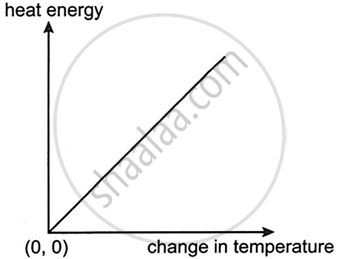Advertisements
Advertisements
प्रश्न
- Calculate the heat capacity of a copper vessel of mass 200 g if the specific heat capacity of copper is 410 J kg-1 K-1.
- How much heat energy will be required to increase the temperature of the vessel in part (a) from 25°C to 35°C?
उत्तर
(a) Given,
mass (m) = 200 g = 0.20 kg
specific heat capacity (c) = 410 J kg-1 K-1
We know that,
Heat capacity (C') = Mass (m) × specific heat capacity (c)
Substituting the values in the formula above we get,
C' = 0.20 × 410 = 82 J K-1
Hence, heat capacity of a copper vessel = 82 J K-1
(b) Change in temperature = 35°C - 25°C = 10°C = 10 K
Energy required to increase the temperature of vessel Q = ?
From relation,
Q = m × c × △T
Substituting the values in the formula above we get,
Q = 0.20 × 410 × 10 = 820 J
Hence, heat energy required to increase the temperature of the vessel = 820 J
संबंधित प्रश्न
Why is the base of a cooking pan generally made thick?
What is the principle of the method of mixtures?
Define the term heat capacity.
Same amount of heat is supplied to two liquid A and B. The liquid A shows a greater rise in temperature. What can you say about the heat capacity of A as compared to that of B?
Which one of the following statements about thermal conductivity is correct? Give reason.
Heat capacity C’= ______.
The amount of heat required to raise the temperature to 1°C is called ______.
Thermal capacities of substances A and B are same. If mass of A is more than mass of B then:
Which substance will show greater rise in temperature if the same amount of heat is supplied to both?
The graph given below shows heat energy supplied against change in temperature when no energy is lost to the surroundings. The slope of this graph will give:

A solid of mass 60 g at 100°C is placed in 150 g of water at 20°C. The final steady temperature is 25°C. Calculate the heat capacity of solid.
[sp. heat capacity of water = 4.2 J g-1 K-1]
